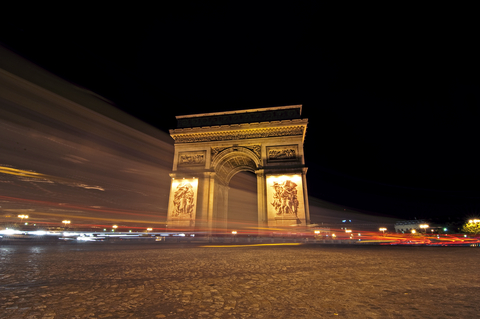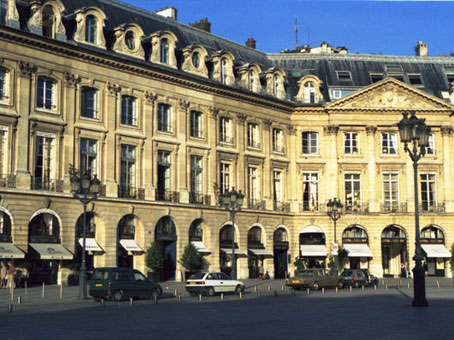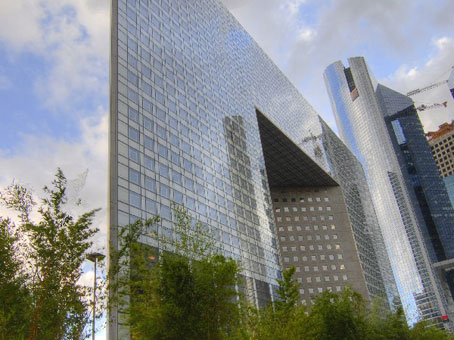
[Last updated January 2025] A guide to flexible serviced offices and office space for rent in Paris as well as general information that may be useful if you are considering renting office space or flexible workspace in the city.
For further Paris office space information or to search office space for rent in Paris just click. Or contact us for any other query.
History & Geography
Paris is perhaps the most famous of all European cities, renowned as a centre of culture, the arts and of course romance. The French capital is located to the north of the country on the winding River Seine. Included in the city are the two islands of Ile Saint-Louis and Ile de la Cite, which make up the oldest quarters of Paris. The area around Paris has been inhabited since around 250 BC when Celtic tribes settled in the region. In 52 BC, the area was conquered by the Romans who founded the town of Lutetia. The town grew rapidly and soon became one of the most important Roman settlements in Europe. However, when the Roman Empire declined, the city came under attack from German tribes and was extensively depopulated. It was around this time, the city was dubbed Paris, after the Celtic Parisii tribe. By the fifth century, the city was under the sway of the Franks, who made it their capital. After extensive Viking raids and the fall of the Franks, Paris came under the control of the powerful Odo, Count of Paris, who was later made King of France. During the Middle Ages, Paris was ravaged by both plague and the invading English forces during the Hundred Years War. It lost its title of capital but soon regained it in 1436 when the French finally defeated the English. In 1789, Paris was the site of the French Revolution which in turn led to the rise of Napoleon. After his defeat, Paris was occupied by the Russians, the first time in over four centuries that it had been occupied by a foreign power. During the 19th century, the Industrial Revolution caused Paris to grow, its population was swollen by migrants coming to the city on the new railways. Paris remained in French hands during WWI but was occupied by the German army during WWII. After the war, Paris expanded further, with extensive suburbs being built on its outskirts to house its ever-growing immigrant population. Currently, Paris is the political and economic centre of France and serves as a cultural icon as well as a dynamic, modern city.
According to the National Institute of Statistics and Economic Studies or Institut national de la statistique et des études économiques (INSEE), the official population of Paris, in January 2023 was 2,102,650.
Economy
The Paris Region has one of the highest GDPs in the world at 742 billion Euros (in 2022), equating to 59,400 Euros per capita. The city accounts for over 30.7 per cent of France’s GDP and 5.3 per cent of the EU27 GDP.
The city has a diverse economy, with its main bulwarks being service and hi-tech manufacturing. Business and financial services make up roughly half of the Parisian economy, though the city has not specialised, unlike other cities of its size and importance, for example, London with finance. The city has forged a reputation as a centre of research and development and is considered one of the leading cities of the world for innovation. The business centre of the city lies between the Opera Garnier, La Defense and Val de Seine.
Fortune 500 companies with world headquarters offices in the Paris Region include AXA, TotalEnergies, Crédit Agricole, Carrefour, BNP Paribas, EDF and Danone.
In 2024, Paris will host the 2024 Olympic and Paralympic Games. This has generated major infrastructure and construction projects.
Tourism & Culture
Paris has a thriving tourism industry and, after London is the most visited city in Europe. The city receives around 20 million tourists per year and boasts the world’s most-visited museum, the famous Louvre, which attracted 7.8 million visitors in 2022 – an increase of 170% from the previous year. Many tourists visit the museum in order to see the famous Mona Lisa, the Venus de Milo statue and works by Picasso, Rodin and other revered artists. Other famous Parisian landmarks include the Eiffel Tower, Notre Dame, the Basilique de Sacre Coeur and many more. The city is also renowned as a centre of French cuisine, considered by many to be the finest in the world. In particular, the quarter of Saint-Germain-des-Pres is famous for its restaurants and cafes. Disneyland Paris has also grown to be a popular destination and sees approximately 12 million visitors per year. Visitors will not be at a loss for places to stay either, as the city has a large selection of hotels, all dependent on the tourism industry. The most famous of these include the Hotel George V, Hotel Ritz and the Hotel de Crillon.
In 2022, Paris received 19.4 million tourists, including 5.1 million international tourists.
Transportation
As one would expect of a leading European city, Paris has a comprehensive and efficient transportation system. The city is served by four international airports, Charles de Gaulle, Orly, Le Borget and Beauvais-Tille. Of these, Charles de Gaulle is the largest. There were 42 million air traffic passengers through the combined four airports in 2022.
The best way to get around Paris itself is to use the Metro, which was built in 1900. The Metro has 26 lines and 245 stations serving the city and its dense surrounding suburbs. Many residents also use the light rail system, which connects St Denis to Noisy le Sec and La Defense to Port de Versailles. The city is also at the hub of France’s extensive motorway system and is ringed by three orbital freeways. Additionally, Paris is the hub of the country’s large rail network. Paris’ main train station is the Gare du Nord, currently the busiest train station in Europe. The city’s five other main stations are Gare Montparnasse, Gare de l’Est, Gare de Lyon, Gare d’Austerlitz and Gare Saint-Lazare. Cycling is also popular in the city, and many use the bike-sharing system called Velib, which has more than 20,000 bicycles spread over the city at various docking points.
The Grand Paris Express Project is doubling the size of the regional super-subway network with 200 kilometres of new tracks and 68 new stations by 2030.

Office space for rent in Paris
Paris’ main business districts are the Hauts-de-Seine Department as well as the La Defense district. The area between La Defense, Opera Garnier and Val de Seine is where most of the city’s Prime and Grade A office space is located.
There was not a major amount of activity that could be directly attributed to Brexit, however, a major deal was the 90,000 square metre letting of the entire Duo Towers development by the financial institution Natixis.
In 2022, following a tough two years, take up through office lettings returned to pre-pandemic levels with 2,108,300 square metres of office space acquired. Just 5 per cent below the 10-year average.
However, due to the uncertain economic outlook at the end of 2022, office space take-up in 2023 is predicted to fall by between 5 and 10 per cent compared to the previous year.
Going into 2023, there was 4.3 million square feet of vacant office space in the Paris Region representing a vacancy rate of 7.2 per cent.
Prime office rents in the Paris region are 1,000 Euros per square metre per annum.
See the Popular Paris Office Space Locations here

Office Space in Paris La Defense
The area of La Defense has grown to be one of Paris’ most popular locations for Grade A office space, and in 2023, Paris La Defense remained the 4th largest business district in the world.
La Defence offers an office rental rate significantly lower than central Paris.
Prime rents in La Defense were stable at €500 per square metre per year in the 1st quarter of 2018 and €543 per square metre per year in 2021.
Prime rents in La Defense are also cheaper than the highest quality office space in Western Crescent, which stood at €619 per square foot in 2021.
It was reported in January 2025 that the owners of Tour Trinity or Trinity Tower, Unibail-Rodamco-Westfield, URW, had sold an 80% stake in the building to Norges Bank Investment Management.
The transaction created a new joint venture partnership under which URW continued to provide asset
and property management services.
Trinity was the first tower of its kind connecting two strategic areas in La Défense and created approximately 3,500 square metres of public green space above the ring road between the CNIT and La Coupole.
Trinity also features bioclimatic facades that optimise the supply of natural light and fresh air, and achieved dual certifications – BREEAM ‘Excellent’ and HQE ‘Exceptional’. It is the first office tower in France to receive a perfect score on the HQE certification, with all 14 targets achieved at the ‘Very Efficient’ level.
The tower in the Puteaux district of La Defense stands 167 metres tall and offers 49,000 square metres of office space over 33 levels.
There is a growing number of flexible workspace providers in Paris that offer a diverse range of workspace alternatives to renting office space on traditional leases.
Local and national operators are joined by international office providers such as Regus, Servcorp, Spaces and WeWork.
These offer solutions, including private serviced office suites, managed office arrangements, and corporate coworking packages such as company-wide desk passes.
As opposed to a leased office, occupational agreements are flexible and shorter-term, and the office rent is inclusive of overheads such as utilities, cleaning, waste management, reception services and other overheads that would be paid for separately when renting an office in Paris in the traditional manner.
Further information regarding flexible managed offices and co-working space facilities can be found on the respective links.
Our office space search, advisory and acquisition services are FREE, always. We are globally regulated by the Royal Institution of Chartered Surveyors (RICS) ensuring the highest standards of commercial property search advice and service at all times.
